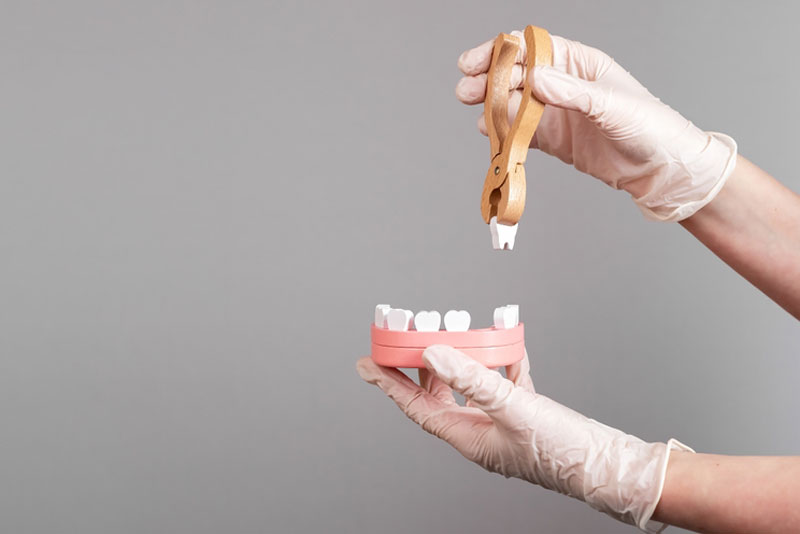Discovering a tooth must be removed can prompt a range of emotions. On the one hand, it can relieve a nasty toothache and get rid of a severe and painful tooth infection. On the other hand, there can be concerns about the gap left behind.
Other times, a dentist in Oshawa might recommend tooth extraction in preparation for orthodontics to address overcrowding problems. Wisdom teeth often need removing as they can become impacted, where they are stuck under adjacent teeth or can only partially erupt.
If our dentist at Margolian Dentistry suggests removing a tooth, it won’t be a decision we take lightly. Your natural teeth are precious, and we will only recommend their removal if a tooth cannot be saved and when removing it helps protect your oral health.
When Would I Need a Tooth Removed?
We may need to remove the tooth in various situations, including the following.
- Severe tooth decay and when a tooth is infected. Removing the tooth allows the infection to drain and protects adjacent teeth.
- Severe gum disease causes the structures around the tooth to be damaged, including the jawbone, so the tooth becomes loose.
- Impacted wisdom teeth.
- Fractured teeth, where a tooth has split vertically through the tooth root.
- A broken tooth that has broken off at the gum line may mean there isn’t enough tooth structure to restore it.
- Overcrowding, where your jaw is too small to accommodate all your teeth comfortably.
- When milk or primary teeth haven’t fallen out as expected, and must be removed to make room for the adult teeth underneath.
What to Expect if You Need a Tooth Removed
It is important to point out that tooth extractions are not painful. We ensure the tooth is fully numb before it is extracted, which is a relatively quick process.
The next part of the process depends on whether the extraction is straightforward or requires a surgical approach.
Straightforward Tooth Extractions
Removing a tooth when fully exposed and visible above the gum line is straightforward. After numbing the tooth, special instruments are used to loosen it carefully before removing the tooth, including the tooth root.
After removing the tooth, the empty socket may be stitched closed and left to heal. If you have opted for a dental implant in Whitby, our dentist might choose to preserve the empty socket by placing a small amount of bone grafting material. This helps ensure a better outcome once the implant is inserted. Sometimes, placing the implant during the same procedure might be possible.
If you haven’t decided on a suitable tooth replacement and removing the tooth needs a visible gap, please don’t worry. We can discuss a temporary solution before removing the tooth, so it is ready to fit soon afterwards.
Surgical Tooth Extractions
You may need a tooth surgically removed if it is impacted or when it has broken off at the gumline. In this case, after numbing your mouth, a small incision is made into the gum, and a tiny hole is created in the jawbone, exposing the impacted tooth.
The impacted tooth can then be cut or sectioned into smaller pieces so it is removed more comfortably and healing is quicker. Once all the tooth is removed, the gum is stitched shut and begins to heal.
Healing after Tooth Extraction
Before you leave our dental office, we will give you plenty of information on what to expect, which depends on the type of tooth extraction in Ajax and the number of teeth that must be removed.
Most people find they heal easily and relatively quickly afterwards, but our friendly dental team are always on hand to provide further advice and help if needed.


